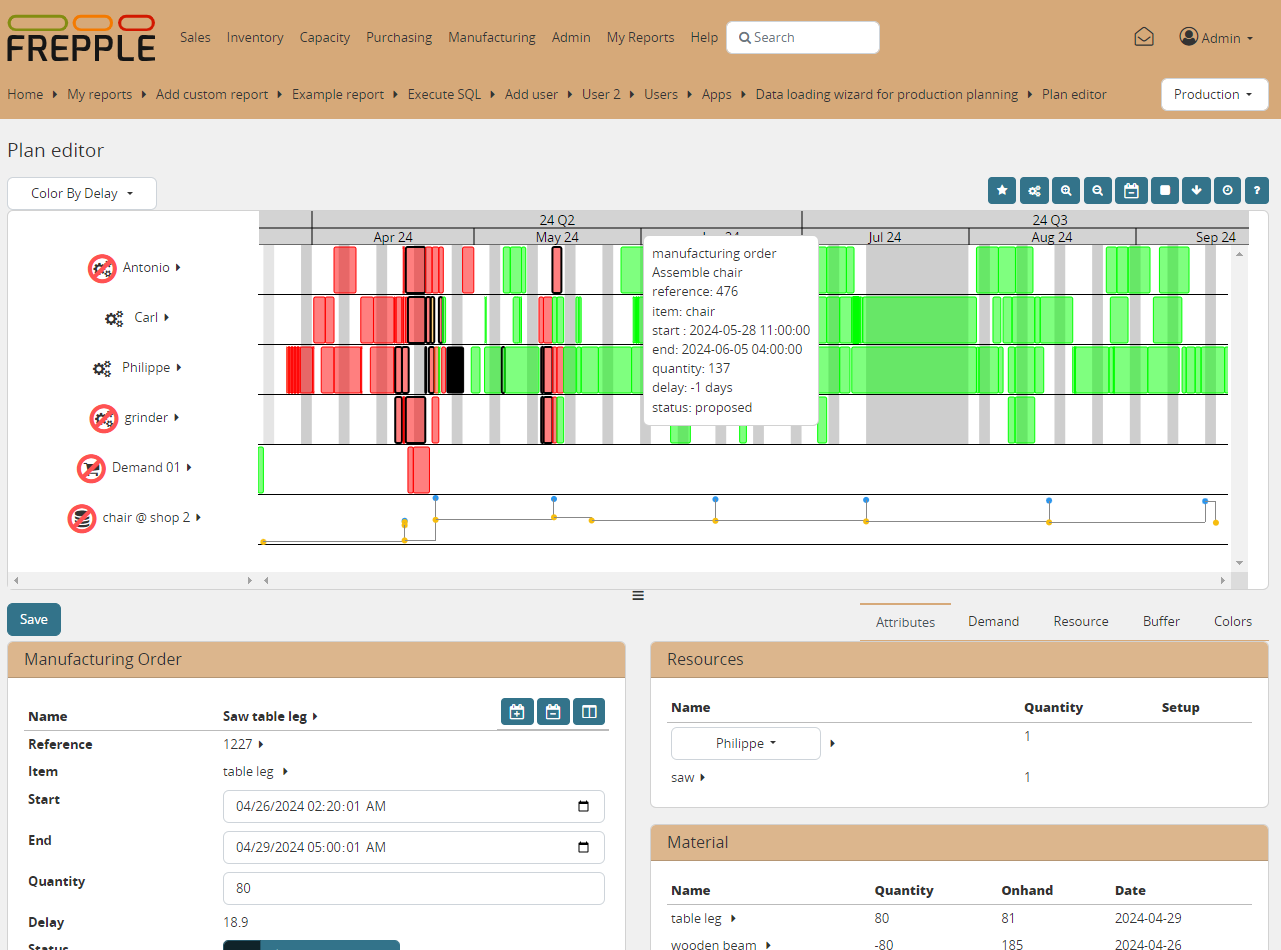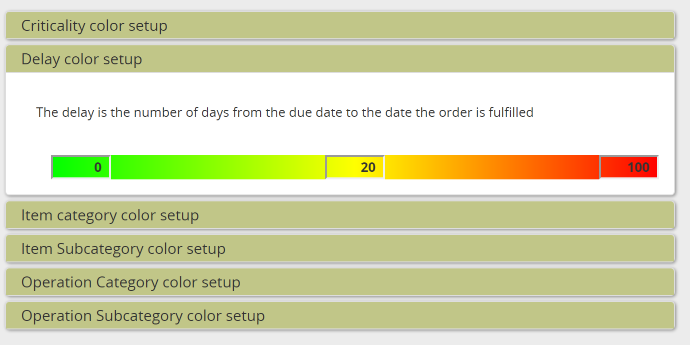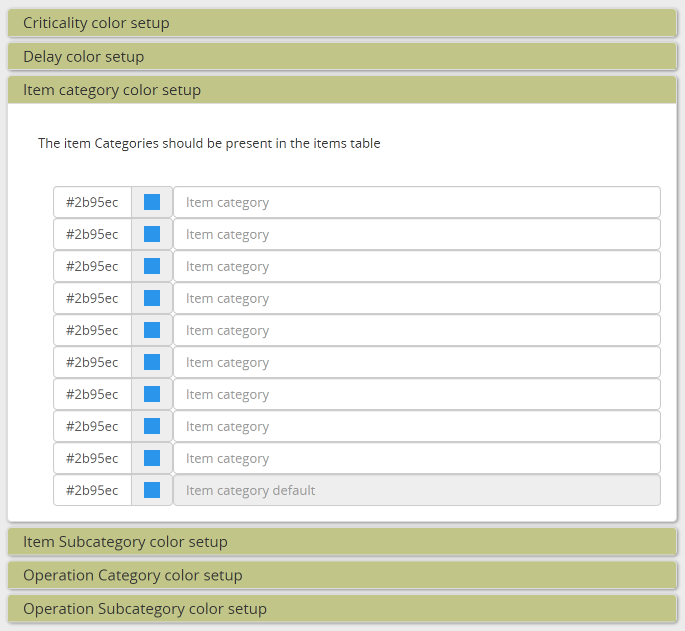Plan editor
Important
This report is only available in the Enterprise Edition.
The plan editor report provides an interactive Gantt chart where the user can visually review the plan and make changes to it.

Customizing the layout
The gantt chart visualizes the plan for resource, sales orders or inventory of an item.
Every user can personalize the report to show those entities he/she is interested in. Use the lists at the bottom of the screen to search for entities, and click on the plus icon to add them to the chart.
Also the time scale of the report can be adjusted. Use the clock icon in the upper right to adjust the horizon. You can zoom in with the looking glass icons.
Interactive changes to the plan
The report supports a number of ways to interactively change the plan:
You can move a manufacturing order to a new date. You can drag and drop them in the graph, or manually type in the new date of a selected manufacturing order.
You can edit quantity, dates and status of a selected manufacturing order in the bottom section of the screen.
You can assign the manufacturing order to an alternate resource or an alternate resource. Drag and drop a selected operation to a different row in the graph (possible alternate rows can easily be identified by the icon at the front of the row), or use the dropdown lists in the bottom of the screen.
You can interactively replan sales orders.

Visualization color schemes
The plan can visualized in different ways. Use the dropdown in the upper left corner to change the color method.


The color configuration is automatically saved when a user with superuser privileges changes them. To assure that all users apply the same color conventions, the settings are shared.
